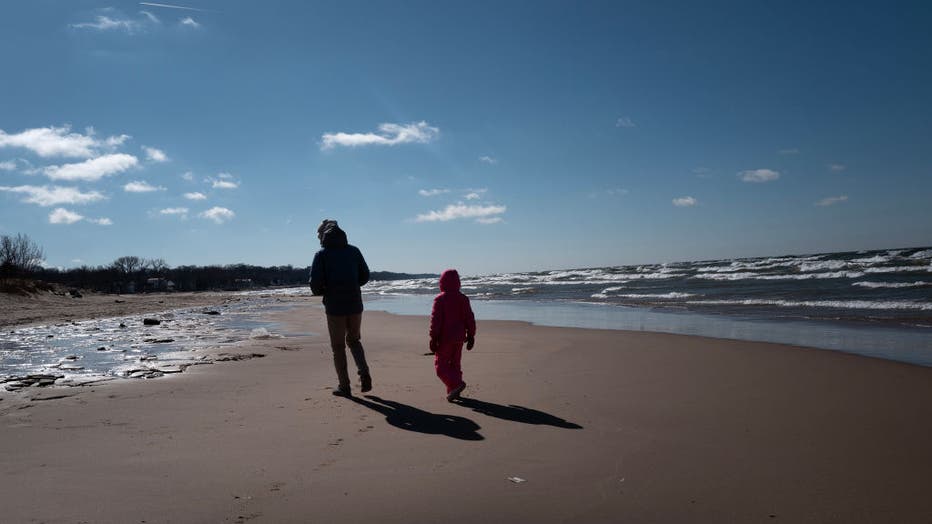Why is it so hot?
LOS ANGELES - Across the U.S., the weather appeared to be all over the place this past week.
There was a powerful winter storm on Monday, which dumped deep snow in parts of the West.
However, warmer temperatures allowed residents in other parts of the country to enjoy more outdoor activities.
Several other states also faced high fire risks due to high winds. So what's going on?
Three factors could explain the confusing weather impacting much of the country.

Waves roll toward the shore on Lake Michigan on February 18, 2024 in St. Joseph, Michigan. The Great Lakes shorelines have historically been ice-covered this time of year, but this winter's warm weather has led to the lowest ice cover over the lakes
The jet stream
Jet streams are narrow bands of strong winds that usually blow from west to east around the world and form when warm air masses from the south collide with colder air masses from the north in the upper part of the troposphere.
Recently, it's been sitting far enough north to mean that warm air has been blasting the normally frigid Upper Midwest.
"The orientation of it right now is not very winter-like," Andrew Orrison, a meteorologist with the National Weather Service in College Park, Maryland told The Associated Press on Monday.
Climate change
In all weather science, it’s virtually impossible to attribute any individual phenomenon to a specific cause directly. How global warming affects the jet stream's position is a case in point.
However, human activities that release gases like carbon dioxide into the Earth's atmosphere are causing global temperatures to reach record highs.
According to the European Union's Copernicus Climate Change Service, January 2024 was the world's warmest January on record.
READ MORE: January was the world's warmest on record, scientists say
El Niño
Another key factor may be the El Nino climate pattern, which is a natural periodic warming of parts of the Pacific that changes weather patterns worldwide and generally heats up global temperatures.
Because of this, the East Coast is expected to see warmer weather arrive by mid-week, with cities like Washington D.C. and New York expecting temperatures well above normal.
Southern regions are also experiencing unusually warm weather and could see temperatures in the ‘80s and ’90s. Dallas-Fort Worth is likely to hit the low '90s, which would break its daily record.
The Associated Press contributed to this story. It was reported from Los Angeles.

